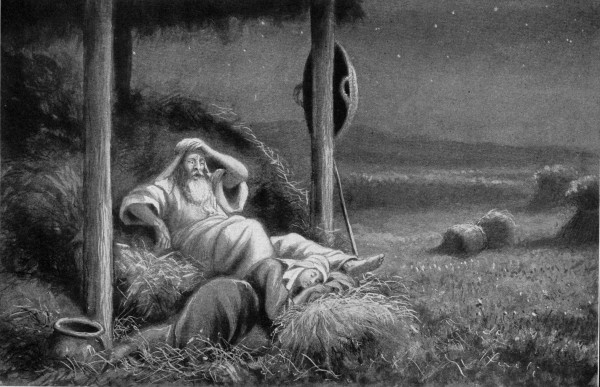In the comments on my previous post Joel asked about the origins of the “theologizing” in Targum Ruth. This morning he further commented,
I’m just now getting into 2nd Temple lit, but the Targums fascinate me, especially as a tradition in which a traditional text was developed for a specific purpose and accepted without what we know of today as reactionary calls of ‘changing God’s word.’
Joel brings up some good points about Targum. (A month ago I posted a basic definition of Targum and I refer you to that.) The specific origins and use of the Targumim has generated a fair amount of debate, particularly in scholarship lately. There are three likely contexts in which the Targumim were used: the synagogue, private study, and in the Bet Midrash (school). The origins, however, likely go back to synagogal use. If I may quote myself from the Dictionary for Theological Interpretation of the Bible:
The origins of the Targumim can probably be traced back to the liturgical practices in the synagogue. The Mishnah (c. 200 AD) states that the reading of the biblical text in a synagogue was to be accompanied with an appropriate translation so that all might understand the text being read (m Meg. 4.4). Rabbinic texts make it clear that the meturgeman, the one who translated the biblical text into Aramaic during the synagogal service, was not allowed to read from a written text, so that the congregation would not confuse the translation with the actual holy, written word. This leads to the possibility that the physical texts that we study today may not, in fact, represent the actual targum as recited in the synagogue. Nonetheless, the written targumim that we can study share this same respect for the Bible as God’s word and exhibit this in the nature of the genre.
So to Joel’s point, while we may not know if there were “reactionary calls of ‘changing God’s word'” there were clearly barriers and delimiters put in place so that the God’s word would not be change or confused with the Targum. In that sense I think that there were definitely concerns that Scripture remain unchanged. Remember, the whole reason for the Targum was to preserve the reading of Miqra/Scripture in Hebrew long after Hebrew as understood by the congregation hearing the words read aloud. Far from changing Miqra, Targum ensured that it could be crystalized.
Furthermore, Targum was never to exist without the Tanakh (although one can read a Targum and it is fully comprehensible without the source text), in fact, we discussed at IOTS how many and likely most manuscripts have the biblical text right there in the Targumic manuscript, usually alternating verse by verse with the Aramaic, although some are in parallel columns. (See the image below of TgLam 3:18.)
The result is that the community was able to both preserve Scripture without any alterations while providing a comprehensible rendering (in the linqua franca) 1Although I want to be quick to note that the Targumim continued to be read and studied in communities long after Aramaic ceased to be understood. In that sense, they themselves passed into a kind of sacred status. and commentary. We might compare it with a Christian congregation today where the passage from the Bible is read and then the preacher offers their “rendering” in a more colloquial English followed/interspersed with the sermon. Not a precise analogy, but I think you get the idea. The Bible is still sacrosanct, but the need to translate (even the English translation!) and interpret is recognized.

- 1Although I want to be quick to note that the Targumim continued to be read and studied in communities long after Aramaic ceased to be understood. In that sense, they themselves passed into a kind of sacred status.



